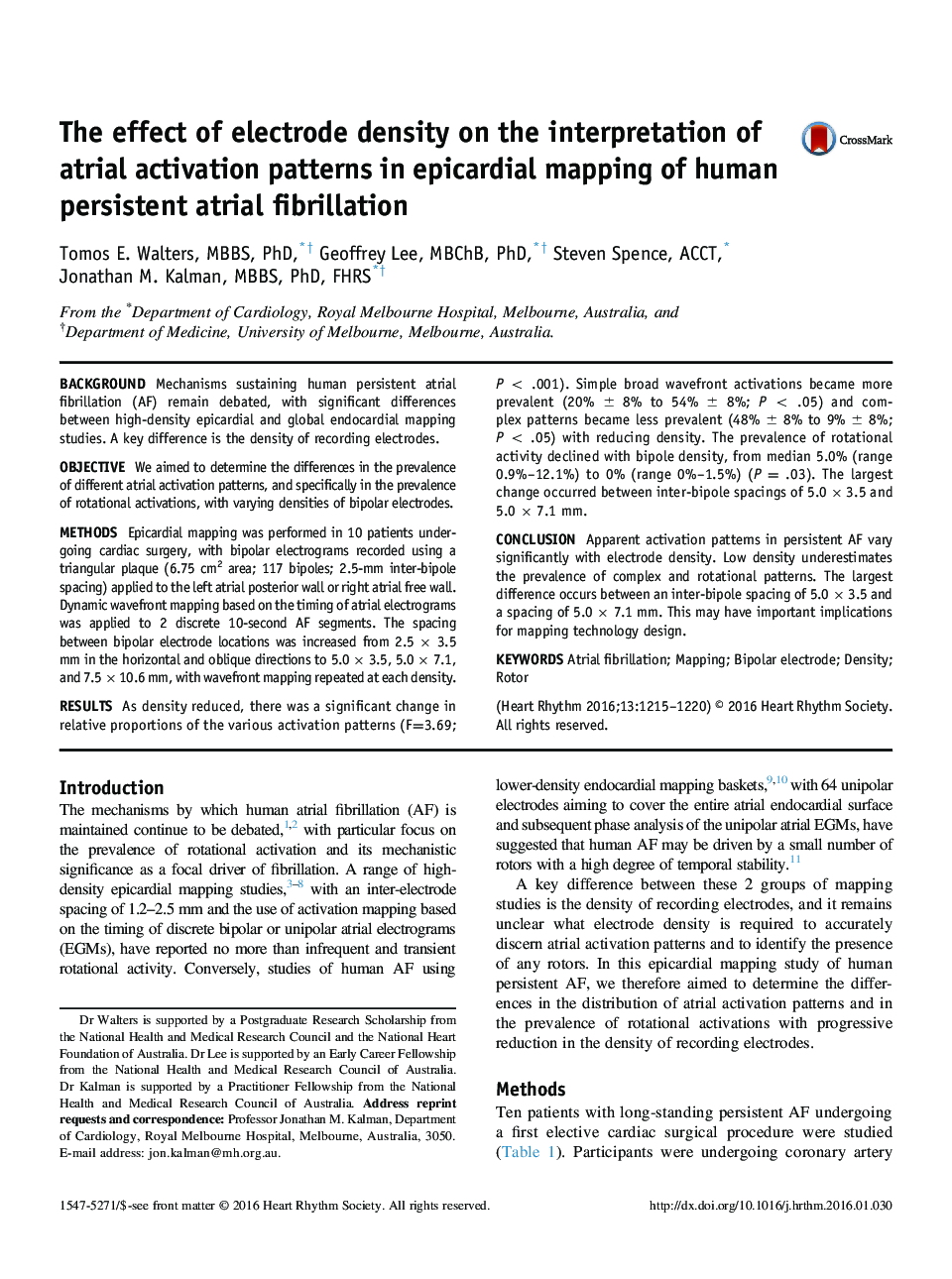| کد مقاله | کد نشریه | سال انتشار | مقاله انگلیسی | نسخه تمام متن |
|---|---|---|---|---|
| 2921704 | 1175800 | 2016 | 6 صفحه PDF | دانلود رایگان |
BackgroundMechanisms sustaining human persistent atrial fibrillation (AF) remain debated, with significant differences between high-density epicardial and global endocardial mapping studies. A key difference is the density of recording electrodes.ObjectiveWe aimed to determine the differences in the prevalence of different atrial activation patterns, and specifically in the prevalence of rotational activations, with varying densities of bipolar electrodes.MethodsEpicardial mapping was performed in 10 patients undergoing cardiac surgery, with bipolar electrograms recorded using a triangular plaque (6.75 cm2 area; 117 bipoles; 2.5-mm inter-bipole spacing) applied to the left atrial posterior wall or right atrial free wall. Dynamic wavefront mapping based on the timing of atrial electrograms was applied to 2 discrete 10-second AF segments. The spacing between bipolar electrode locations was increased from 2.5 × 3.5 mm in the horizontal and oblique directions to 5.0 × 3.5, 5.0 × 7.1, and 7.5 × 10.6 mm, with wavefront mapping repeated at each density.ResultsAs density reduced, there was a significant change in relative proportions of the various activation patterns (F=3.69; P < .001). Simple broad wavefront activations became more prevalent (20% ± 8% to 54% ± 8%; P < .05) and complex patterns became less prevalent (48% ± 8% to 9% ± 8%; P < .05) with reducing density. The prevalence of rotational activity declined with bipole density, from median 5.0% (range 0.9%–12.1%) to 0% (range 0%–1.5%) (P = .03). The largest change occurred between inter-bipole spacings of 5.0 × 3.5 and 5.0 × 7.1 mm.ConclusionApparent activation patterns in persistent AF vary significantly with electrode density. Low density underestimates the prevalence of complex and rotational patterns. The largest difference occurs between an inter-bipole spacing of 5.0 × 3.5 and a spacing of 5.0 × 7.1 mm. This may have important implications for mapping technology design.
Journal: Heart Rhythm - Volume 13, Issue 6, June 2016, Pages 1215–1220
